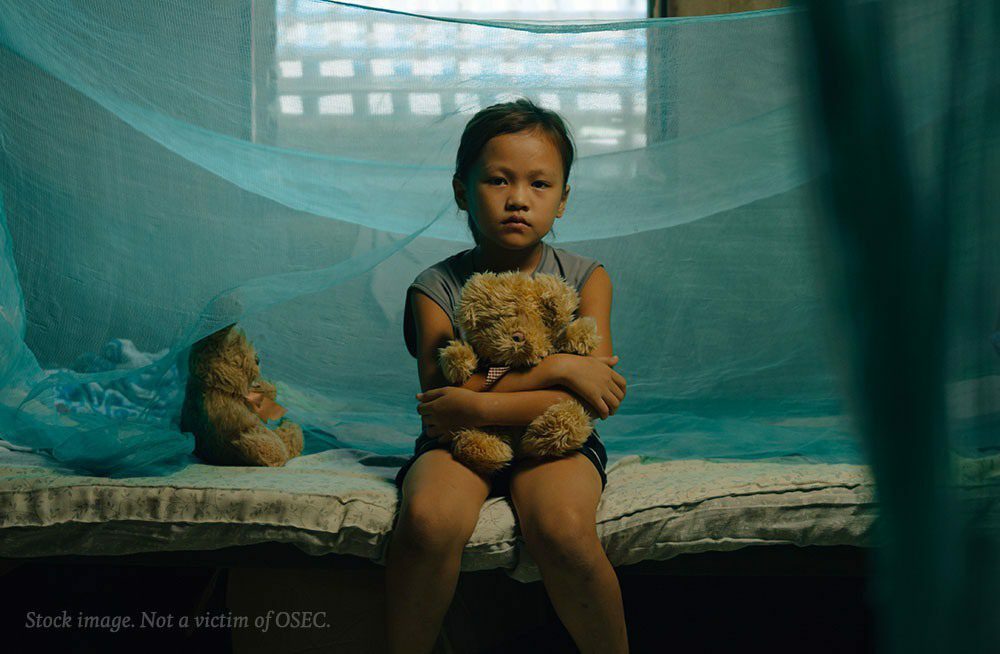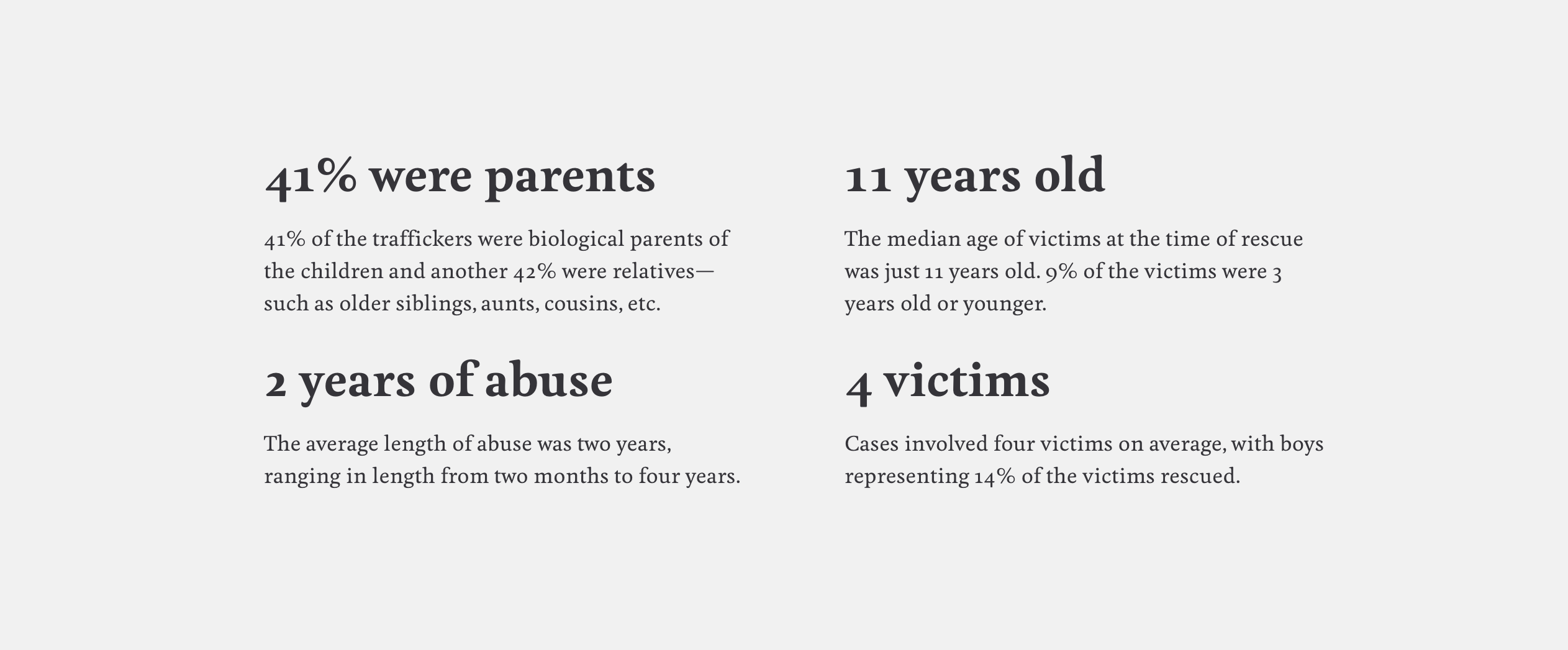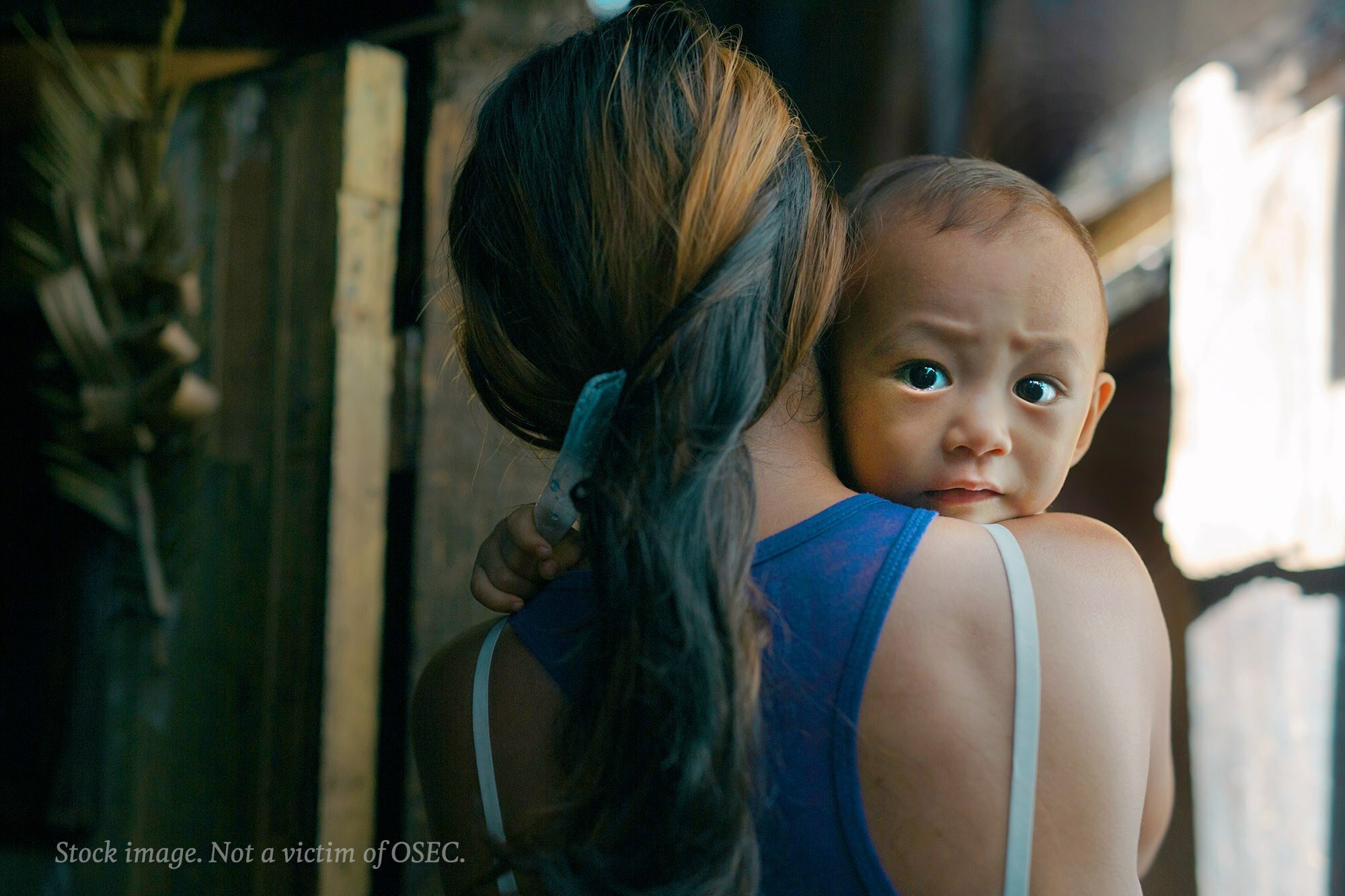
Online Sexual Exploitation of Children: Hidden in Plain Sight
A groundbreaking IJM Study reveals significant findings and recommends holistic solutions to curb this growing global crime
By John Tanagho, Director of IJM END OSEC Center

International Justice Mission has worked in the Philippines alongside the Philippine public justice system for over 20 years—first combating sex trafficking in brothels, bars and streets and then transitioning as we began to notice a disturbing trend: Filipino children were being sexually abused online for profit in a new form of human trafficking. In 2016 IJM Philippines transitioned to focus completely on ending Online Sexual Exploitation of Children (OSEC), sometimes referred to as cybersex trafficking of children.
What distinguishes OSEC from other forms of child trafficking and sexual exploitation is that the child sexual abuse material is paid for, directed, and viewed live by child sex offenders from around the world from the comfort of their homes in the U.S., Australia, Canada, UK, and Europe. In case after case that IJM has worked on, these “demand-side” sex offenders use internet platforms with live video and chat functions to issue graphic and specific instructions to traffickers to violate children of specific ages in specific ways. This sexual abuse is livestreamed for the offender’s consumption on a “pay-per-view” basis and documented in photos and videos.
Traffickers, who are often relatives and caretakers, are motivated by the quick cash the crime brings, and perpetrators residing in other countries are happy to direct the sexual abuse of children—even infants—for their viewing pleasure.

And all this happens on popular platforms that are surprisingly familiar to you and I. They’re the same ones that so many of us use every day to communicate with loved ones during this pandemic, to get and share news, to see and post cute photos and videos.
In my six years of fighting this crime with IJM, I have seen first-hand the severe harm this abuse causes children and families. OSEC is a crime that—if left unchecked—has the potential to not only devastate children but destroy families and entire communities.
It is one of the reasons IJM's groundbreaking study, Online Sexual Exploitation of Children in the Philippines: Analysis and Recommendations for Governments, Industry, and Civil Society, is so important—to stop the abuse, heal the scars, end the impunity, and forge a global resolve to end OSEC.





IJM Philippines launched a study to find out how widespread OSEC was and determine what methods were most effective in eliminating it.
With funding in part by the U.S. government, IJM led the study and engaged an unprecedented number of experts and partners within the child protection space, including foreign law enforcement agencies, INTERPOL, and many others. For over three years we employed a number of different study methodologies in our attempt to determine the prevalence of OSEC in the Philippines.
Along the way, we found insights that help us and our partners better understand offender and victim demographics and what elements enable this crime to thrive. The results of the study revealed the following:

The study also confirmed what we long suspected; the Philippines is a global hotspot for OSEC, but the crime is also emerging globally in other parts of the world.
The study was unable to measure the prevalence of OSEC in large part because it is an undetected and underreported crime. Social media companies and live streaming platforms currently are simply not recognizing when child sexual abuse is being live streamed on their online products and services. And when related online crimes against children, such as the sharing of photos and videos, are detected, companies vary widely in how much information they report to authorities.
No one can measure the prevalence of online sexual exploitation of children with the current lack of detection and reporting, global coordination, and data gathering.
The study’s recommendations chart the path forward to expose, neutralize, and deter this global crime through a coordinated global response.

Technology and financial sector platforms must improve detection and reporting.
Early detection, coupled with robust reporting, will help law enforcement identify and rescue thousands of children in urgent need of protection before they suffer years of abuse. That’s why the Study recommends that technology companies, also known as electronic service providers (ESPs), prioritize protecting children from sexual exploitation on their platforms.
Companies can do that by developing and deploying tech innovations to proactively recognize newly created child sexual abuse material—particularly in live video streams. Identifying those materials should become a corporate priority and essential business function because of the gravity of harm that ongoing sexual exploitation causes victims.
Real children need rescue now, but rescue starts with timely detection.
Another way to identify OSEC victims and offenders is through cross-industry data-sharing and collaboration—tech companies, money transfer agencies, and NGOs working together to recognize indicators or signs of OSEC on their platforms.
Likewise, money transfer agencies should ensure detection methods are in place to flag and report suspicious money transfers in a timely manner and allow for immediate sharing of those activities along with all relevant information with law enforcement. Recognizing and reporting suspicious OSEC financial transactions should be prioritized at the same level as anti-money laundering or terrorism financing. At IJM we have seen first-hand how collaboration between money transfer agencies and law enforcement can result in immediate victim identification and relief.
Governments and NGOs need to protect children against re-traumatization.
To ensure a trauma-informed and holistic system of care for OSEC survivors, governments and NGOs should build child-protective systems that protect children from re-traumatization during prosecutions. Prosecutors and other justice system officials should use child-friendly techniques when collecting and presenting evidence in court, such as using digital evidence or video interviewing instead of live victim testimony or considering plea agreements to achieve convictions.
We encourage the Philippine Government to continue investing in ending OSEC.
The Philippine Government has made significant strides in addressing the crime of OSEC within its country by increasing funding to the national response of combatting trafficking in persons crimes—including OSEC cases. Additionally, they have increased collaboration with and between international law enforcement—enabling both source and demand-side governments to hold offenders accountable through the groundbreaking Philippine Internet Crimes Against Children Center (PICACC). In many ways, the Philippine Government’s whole-of-society approach to OSEC is a model for other source-side governments to examine and emulate as appropriate.
We encourage continued development as well as expanded investments in funding and increases in dedicated personnel within it specialized anti-trafficking units. Building on current relationships with the international law enforcement community will serve to increase the global community’s ability to hold OSEC source and demand-side offenders accountable, protecting current and future generations from OSEC.

OSEC is a crime that thrives in the shadows, hidden in private chats and live streams on the internet. But to protect children around the world who are vulnerable to exploitation online right now, everyone must commit to do the hard work that brings OSEC into the light.
Even in publishing this study, we have seen the topic of OSEC move to the forefront of the global conversation to protect children from violence and exploitation.
As IJM partners with global stakeholders to end OSEC, we bring hope to the children currently suffering undetected by the world. We will bring OSEC to an end and we will do it together—governments, NGOs, industry, individual donors and advocates, churches—everyone doing their part to protect children from violence.
*Rescue photo credit to Philippine National Police-Women and Children Protection Center, Anti-Trafficking in Persons Division (PNP-WCPC-ATIPD)
About the Author
John Tanagho is the Director of IJM END OSEC Center. The END OSEC Center sustainably protects children from online sexual exploitation by ending impunity and holding perpetrators accountable through a coordinated global response. Previously, John served for nearly six years as the Director for IJM in Cebu, The Philippines.